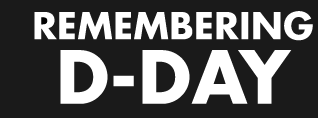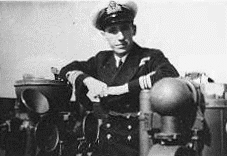I was appointed in 1944 as Staff Officer Operations (SOO) to Captain Colin Maud RN, in charge of JUNO beach. My work was to liaise with the 3rd Canadian Infantry Division, who were scheduled to land at 0745 (H-Hour) on Tuesday, 6 June (D-Day), and to ensure that their supplies of petrol, ammunition and compo packs were maintained as they advanced. The Royal Winnipeg Rifles (known as the little black devils) and the Regina Rifles were the first to land and suffered heavy casualties, but they succeeded in putting all the strong points, gun emplacements, and pillboxes out of action as they were determined to revenge the unsuccessful Dieppe raid in 1942.
The Canadians were soon advancing beyond the sea wall into the town of Courseulles-sur-Mer and the countryside. Captain Maud and I followed ten minutes later to set up our Beach Headquarters. We began to arrange beach exits, as tanks and vehicles would soon be rolling ashore, and to order landing craft to leave as soon as they unloaded, so as to avoid broaching to in the strong wind and to avoid congestion on beach space.
All Naval Beach Parties were in khaki uniforms as blue would have been too conspicuous for snipers.
And so on JUNO beach our work went on for several weeks supplying the Canadian 3rd Division with their essentials, evacuating the wounded and prisoners-of-war, removing the beach obstructions, repairing damaged landing craft and keeping the beach clear for incoming vehicles.
Beach traffic came to a stop during the great gale from D+13 to D+16 (19-21 June) and all landing craft had to take shelter. There were 500 inside the Mulberry Harbour at Arromanches.
It was a great relief when Cherbourg was captured by the Americans on 26 June.
By the end of July many of the Beach Parties were on the way to the Pacific theatre of war, and this included myself.

